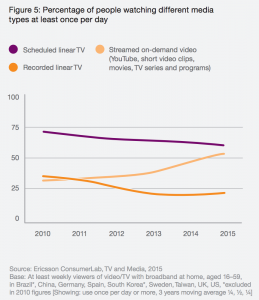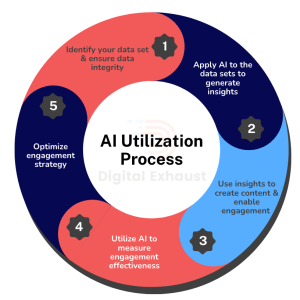It’s February, and you know what that means — the holidays are just around the corner! Okay, maybe not, but columnist Dave Davies explains why now is actually the ideal time for SEOs to start preparing for holiday season 2017.

We all know that the holidays are fast approaching. In just 10 short months, we’ll all be gathered around home and hearth; in just nine short months, the chaos of filling that home and hearth with a wide assortment of colorful boxes, trees or candles will begin.
Regular readers will remember that last November, I published an article on last-minute SEO for the holidays. As a quick refresher, here’s what I advised might impact a site’s rankings with just weeks to make a difference:
- Making sure your Google My Business is present and accurate
- Optimizing your titles and descriptions for click-throughs
- Optimizing for long-tail keywords
- Hijacking rankings — that is, buying advertising on sites like Yelp that might already be ranking and where buying ad space is cheaper than AdWords
- Double-checking the content optimization on pages that are ranking decently but just outside the higher click zones, where a single position gain can have a great impact
I went on to note that these were Band-Aids to get folks through the holidays and that immediately after, it was time to get working on this year. Well, it’s that time! So the question is… have you started yet?
I’m not going to be getting too deeply into SEO strategies in this article, as each scenario is a bit different and each is a topic of its own. I will, however, be referencing some articles that I consider helpful to get you started. In this article, we’re going to look at realistic timelines for some of the core optimization areas you’ll need to tackle to help you prioritize.
Keyword research
One quick thing before we get to that, however, is keyword research. The first thing to note is that there are a variety of tools available to do your keyword research with. Each one of these tools has its own flaws, so here’s my mantra when it comes to keyword research (or pretty much all data analysis):
All data is a lie. Knowing how it’s lying to you, however, makes it useful.
Essentially, most of the data in the web space is not 100 percent accurate, and knowing how it’s inaccurate allows you to adjust for it and make better decisions. Consider the following popular keyword research tools:
- Google Keyword Planner, where the issue lies in the data being focused on paid search impressions and thus grossly inflated for unique organic search queries
- Moz Keyword Explorer, which tries to adjust for the issue with Google’s tool but is based on algorithms. Not all queries are the same, so the data must be wrong most of the time; however, from an organic standpoint, it will often be less wrong than Keyword Planner.
- Ahrefs Keyword Explorer is based on Google’s Keyword Planner data, but rather than adjusting mainly for unique organic searches, they’ve gone a different route, which is to use their clickstream data to adjust for clicks as opposed to queries. Again, this data is skewed based on the accuracy of their click models and which terms they have data for.
There are other great tools out there, but these are my personal go-tos, and the rest all need to be viewed similarly. Their data is a lie, but once you know the shortcomings, you can take that into account and set your expectations and strategies accordingly.
All right, following that little aside on the flaws of keyword research tools, let’s get to the seasonal aspect of the flawed information. I’m going to use Google’s Keyword Planner in my example (as everyone has access to it) to look at what happens to certain queries during specific seasons. Check out the search volume data for the keyword “ugly sweater”:

If you just looked at your data in a spreadsheet without taking into account seasonal trends, you’d simply see 110,000 searches/month on average. You might adjust for the fact that most of those aren’t unique organic searches and think to yourself, “Well, that’s only around 30,000 or 40,000 searches in a month.”
The reality is that this search term has virtually no traffic for 10 months of the year and hits a peak at over a million searches in December (give or take… remember that data is a lie, and my guesstimates are no exception).
So, take the time to review your keywords; understand what their seasonal trending is like and how the volume is impacted by the holidays. This will help you to really understand the value of your targets prior to locking in on them. Worse than not ranking at all is putting in huge effort to rank for terms that aren’t worth it.
Carrying this one step further, I like to enter some of my top-level terms into Google Trends to verify what I’m seeing in the keyword tool and also to understand how a term or product is trending over years. For example, with “ugly sweater” we get:

If you hover over any point, you’ll see a number between 0 and 100 indicating interest over time. A value of 100 marks the peak of a term’s popularity over the time frame selected, and it is really just to be treated as a benchmark number to compare other dates with.
Looking at the graph above, we see that “ugly sweater” reached peak popularity during the 2014 holiday season. This past holiday season, 2016, saw a 10 percent reduction in interest from 2014 and a 6 percent reduction in interest from 2015.
If this trend continues, we would expect to see another ~5 percent drop in 2017, and that needs to be considered as a possibility. Whatever you’re expecting your 2017 traffic to be, based on 2016 search volumes, we’ll want to reduce them by 5 percent to give ourselves a realistic expectation of what’s to be gained and whether the effort is worth it or better placed in other areas.
Okay, so we’ve covered redoing your keyword research. Now to build a case for why you need to do this now and get started on your 2017 holiday SEO strategies.
Link building
So many studies have been done talking about the importance of links in ranking. If you want evidence, you can read any of the following:
- Now we know: Here are Google’s top 3 search ranking factors
- Results from the Local SEO Ranking Factors Study presented at SMX East
- New Google ranking study shows links are incredibly important to the ranking algorithm
Now that we’ve got that settled, we can move on to why I’m listing links first when trying to make a case for getting started now. First, they’re incredibly important. Second, building links can take a long time. How long? you might ask. Long enough that you should have already gotten started on your efforts for the holidays — and if you haven’t, you need to do so right now.
Last year, Kristina Kledzik, acquisition marketing manager at Rover.com, shared some research she did into how long links take to impact rankings. Not surprisingly, it can take quite a while for links to have an impact.
The links Kledzik measured continued to gain in value for at least 22 weeks — that’s just over five months, which would put us in August if you built that link right now instead of reading this article.
Kledzik also found that links with higher Domain Authority moved the needle faster. Domain Authority is not a perfect metric (as most are aware), but generally this should be interpreted to mean that more valuable and authoritative links impact rankings faster. Use the metric as you will to determine that.
The point I’m really trying to make here is that if you want to rank by November, and you want to maximize the impact of your energies, then you’ll want to be on a path to have as many links as possible completed by mid-May so that they’ll be approaching higher levels of value by the time you need them. Is it starting to sound more reasonable to be thinking about the holidays yet?
Now, add to your estimate the time to either find a link-building company or put together your own strategies — including figuring out your targets and how you want to get the links built — and you might be thinking to yourself that it’s already too late. Here’s the good news, though: All those links built after mid-May will still be adding weight to your site. So while you may not be maximizing their value for the holidays this year, those links will still help to push you forward in the long term.
Content creation
Now let’s think about content creation. We know that content is required for rankings, so I won’t bother trying to justify the importance of it. Rather, let’s consider how long it will take to create.
There will be content that we need to generate to rank for new terms; there will be content we need to rework and reoptimize to maintain or build on the rankings we have; there will be content we need to create to aid with link building; and there will be content we need to create to grow our social profiles.
(Oh, and let’s not forget about any content you’ll be creating for paid search and social. That’s not the focus of our article, but it will take time away from content creation for organic channels and thus needs to be factored in as such.)
I can’t give real estimates on how long all of this will take you, as that varies hugely by industry, resources, talent and content type. An infographic, for example, can take an hour, or it can take weeks. A good article or blog post can take 30 minutes, or it can take months of research, depending on how in-depth the piece is. A video is the same: You can livestream an event that adds little time to your schedule, or you can create unique and captivating videos that take time and resources to produce.
There is no magic number, so you need to put together the strategy that will work for you in your niche.

Search Engine Land’s Content & Search Engine Success Factors is a great place to start to understand what impacts content and rankings. When looking at specific strategies and types of content, there’s a lot to consider. I recommend reading some of the article here on Search Engine Land by columnists Jim Yu and Andrew Dennis. Jim focuses on content for users (from initial search to conversion) and Andrew on content for links.
While I can’t give exact timelines, I don’t think I can overemphasize the importance of starting now. Not only is the content going to be necessary for your link-building efforts, you need to get pages on your site built to rank and then build links to them. And if we look above to our link-building timelines, we’ll see that ideally, we would have started getting that content together yesterday.
Conversions
And then coming in at the end is the conversion. You need traffic to analyze and determine where you can improve, and then you need time to set up tests, measure the results and make changes. Unless you’ve got website traffic numbers to rival Amazon, you’re going to need weeks to get real, actionable information. And then you may need to adjust again.
While the time necessary to conduct conversion optimization testing will vary, here’s a pretty standard timeline for conversion optimization tests:
- Analyze data for weak spots in the site and assess the issues causing them — one week.
- Plan out site adjustments and develop necessary content — one week.
- Set up tests and run — two weeks.
- Analyze new data for weak spots in the site, and…
Basically, a full test will take about a month to get any real data. It can be reduced, of course, and we’ve run tests in a week where the data produced actionable insights. But generally, this is not the case, and it’ll take between two and four weeks.
While you may want to run tests during the holidays, you’ll want to have the big bugs worked out before then. This means that you’ll want to have time to run at least one conversion optimization round before the holiday shopping season really begins.
You might think you have everything in order, but remember that your organic search efforts between now and the holidays are going to be garnering new traffic from new people to new pages. These users and their behavior patterns will be different, and understanding those differences and capitalizing on them can have a significant impact on your bottom line.
Running tests in October will be highly desirable, so that pushes back our target times to have secured the desired rankings by a month. So our May target above to rank for November needs to be pushed forward to April to give us a month for testing. It’s now early February, so that’s about eight weeks away.
You have 8 weeks!
So… you have eight weeks to get as much done as you can, knowing these efforts will realize their full impact by the time you need to be ranking. This isn’t to say that you should stop after that, but your efforts from April moving forward (in link building, at least) will hold less value for the 2017 holiday season the longer you wait.
My recommendation? I would start work creating (or updating) the content you want to be ranking well this holiday season, while working to build links to existing content in the meantime. Once your content has been fully created and optimized, the content development efforts can be shifted entirely towards link acquisition.
And, if you’re not competing with any of our clients, I’d like to wish you the very best of luck in your preparations for the holiday season!
[Article on Search Engine Land.]
Some opinions expressed in this article may be those of a guest author and not necessarily Marketing Land. Staff authors are listed here.
Marketing Land – Internet Marketing News, Strategies & Tips
(82)







